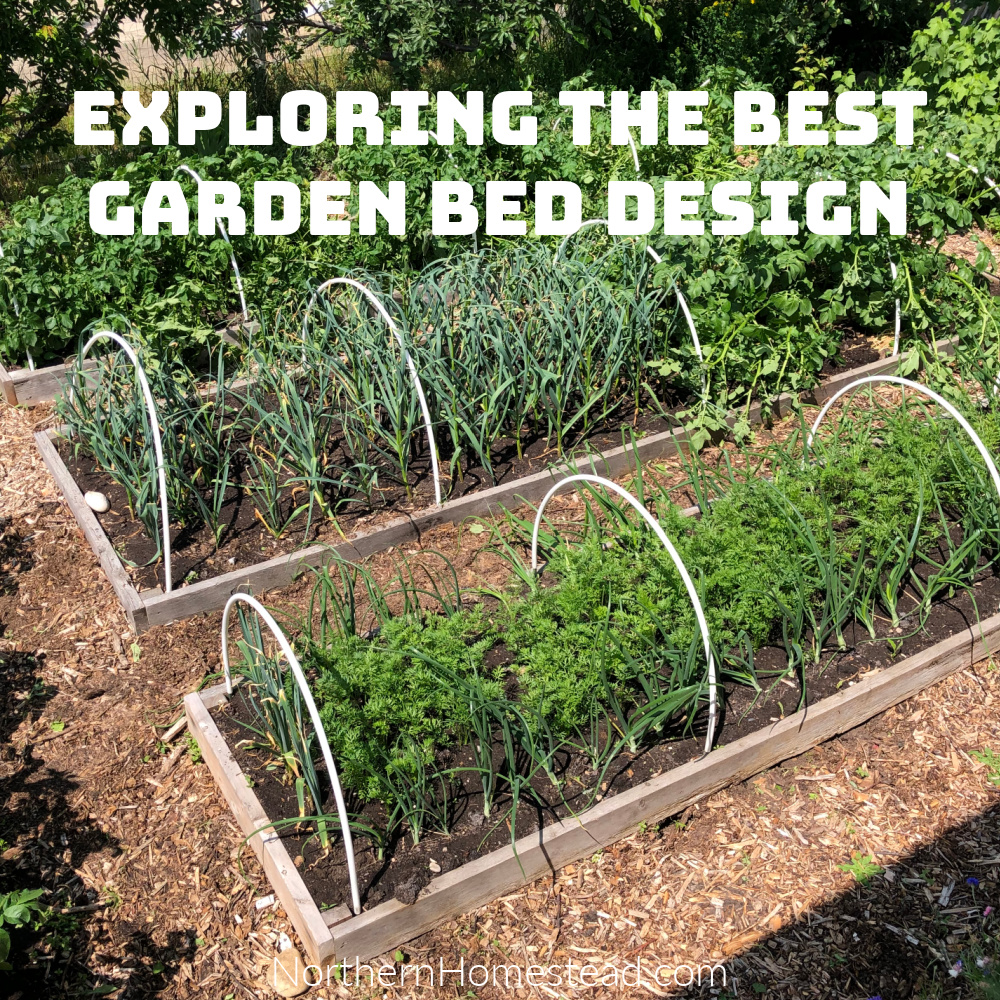
There are numerous ways to design a garden bed, and over the years, we have experimented with quite a few different models. In this blog article, we will review garden bed design techniques and share our top recommendation based on our experience, explaining why it stands out.
The garden plot
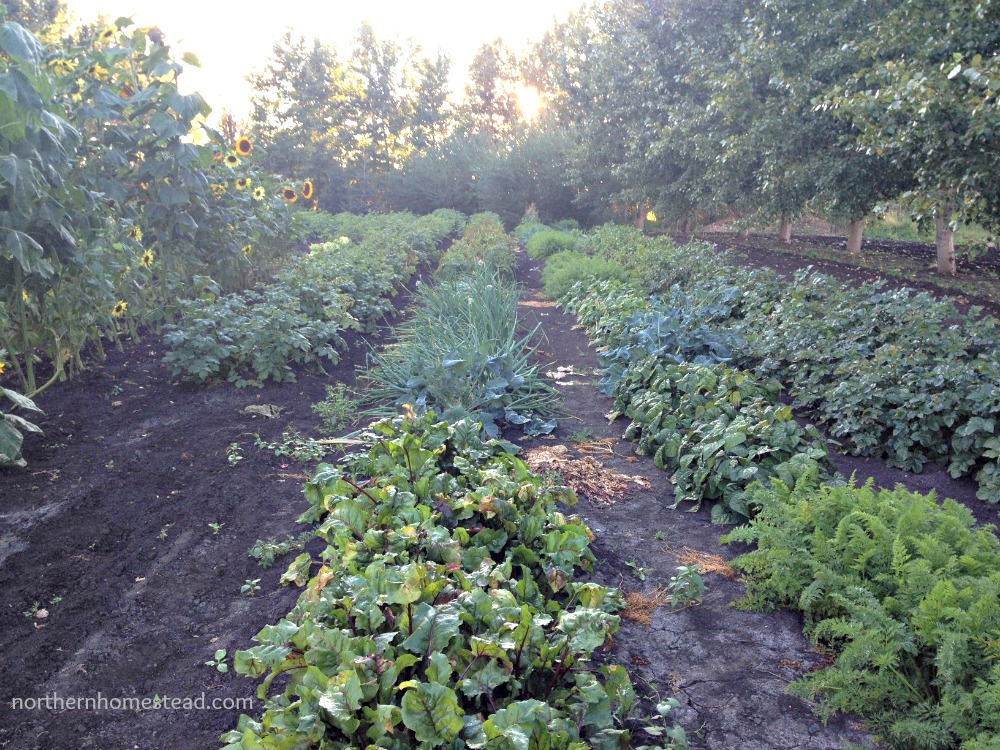
The in-soil garden plot is the most traditional type of garden. This is how our parents gardened for years, and it’s how we started as well. The designated area is simply tilled or turned over each year; rows are then marked, and the garden is planted. The simplicity and tradition are what keep this method popular. Additionally, if you use machinery to till the garden, this is the most convenient approach. However, you will still need to do all the measurement work each year, and when incorporating soil improvements such as compost, you end up wasting a lot of it on the pathways.
Market Garden design
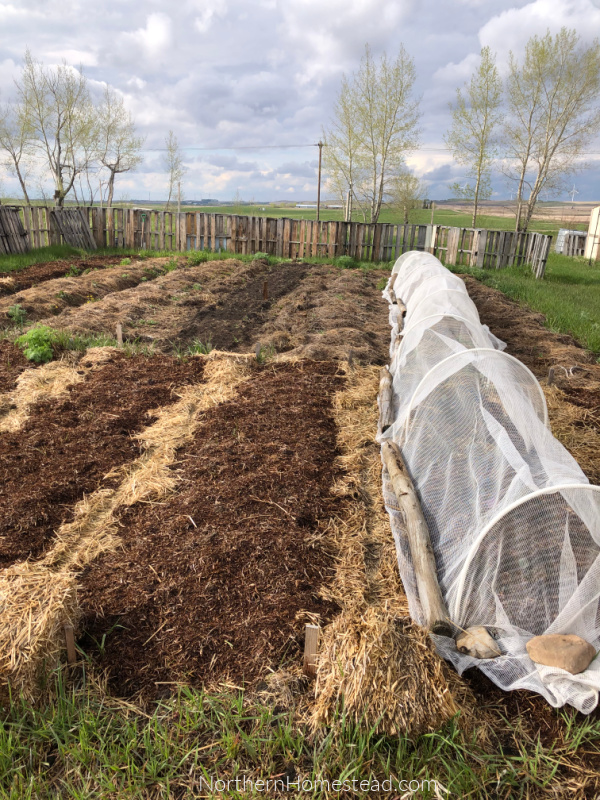
Market gardeners have improved the design of in-soil gardens by creating permanent beds that are typically 30 inches (2.5 feet) wide, with pathways measuring 18 inches (1.5 feet) wide. This layout provides easy access to the beds for individual cultivation, and the pathways can be mulched if desired. Market gardeners favor this design because it is well-suited for large vegetable gardens that utilize crop rotation. However, for home gardeners, many plants may be too large for the narrow beds, and the entire plot still requires weeding.
Ellevated garden beds
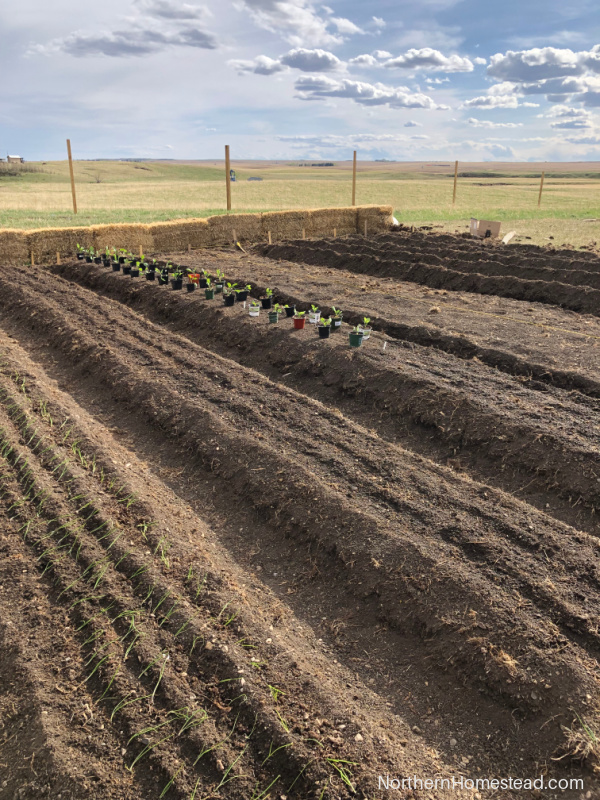
To elevate the garden beds, allow an easy way to double the topsoil by removing it from the pathways and adding it to the beds. You can make the beds and pathways as wide as you prefer. If it rains frequently, the advantage is that the beds won’t become flooded; however, the downside is that the pathways may become muddy. Rain and wind can disrupt the structure of the beds, so it’s necessary to start fresh each year.
Raised garden beds
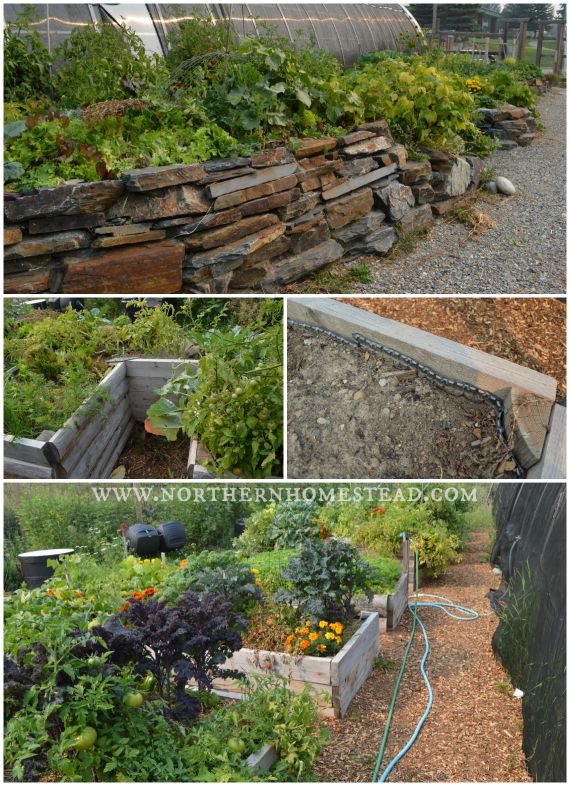
Raised garden bed structures have become very popular, and for good reasons. It is much more convenient to work in a raised garden compared to bending over to tend to the soil at ground level. Raised garden beds also look tidy and can be quite attractive. Additionally, they warm up sooner in the spring and are less likely to experience frost damage.
However, there are downsides to consider. The cost of materials for building or purchasing a commercial raised bed can be high. Another drawback is the expense of soil, even though you have the option to create your own soil mix for raised beds. Lastly, raised garden beds tend to dry out more quickly and require more frequent watering.
Raised beds can be constructed in various sizes and shapes. If you’re planning to build one, consider creating a raised, protected garden as well. It has worked exceptionally well for us in a cold climate, allowing us to grow heat-loving plants without a greenhouse.
Low raised garden beds
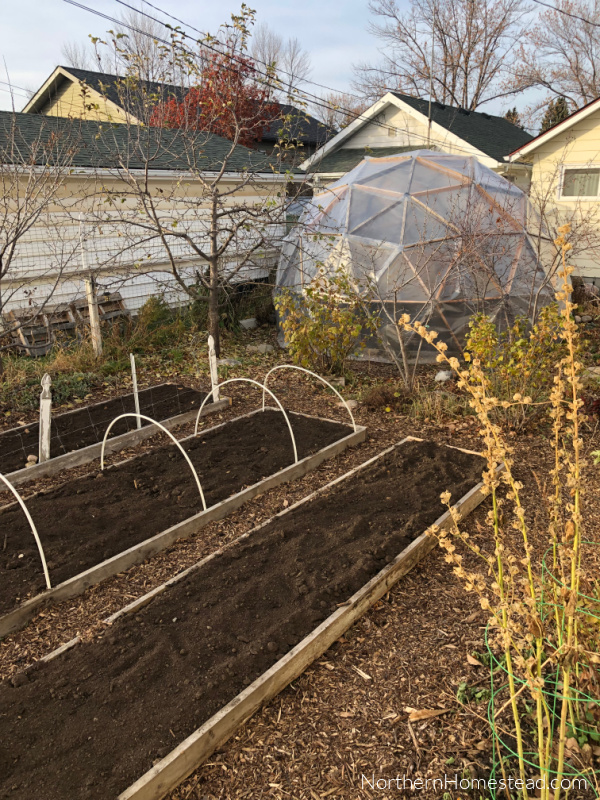
This brings us to what we believe is the best garden bed design: low raised garden beds. They offer all the advantages of in-soil gardening, such as reduced watering needs and the ability to use existing topsoil to lower costs. Additionally, they have the benefits of raised garden beds, including a neat appearance, ease of use, and the implementation of permanent pathways.
Low garden beds can be constructed using various materials. Ours are made from 2×6 boards, which have lasted over 10 years because they don’t need to support as much soil. Other options include cinder blocks, old garage doors, and more. You can also purchase low garden beds, which typically cost less than taller ones.
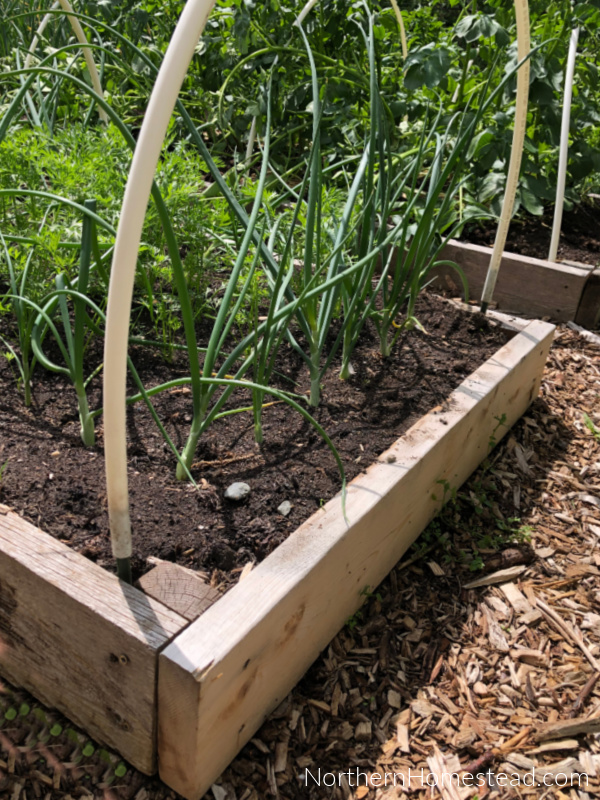
Our preferred size for low garden beds is 3 feet wide, with variable length depending on the available area. Pathways should be at least 1.5 feet wide, though more space is more convenient.
We top our low raised garden beds regularly with mulch or compost. This leads to the soil getting better and better. It is very easy to work with and requires no tilling.
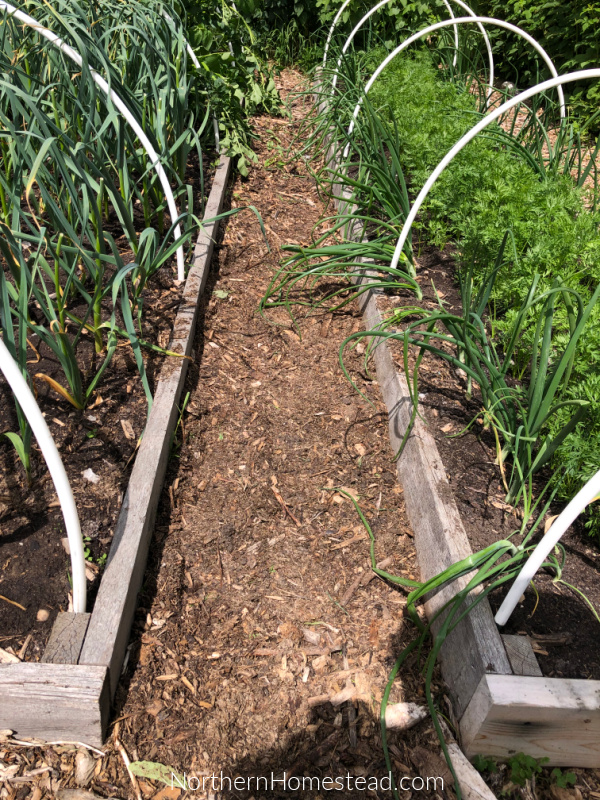
Our pathways are currently mulched with wood chips or shavings. However, I still dream of having permanent pathways made of paving stones. The low raised beds would allow for green pathways that could be mowed regularly. Ultimately, it’s really up to your preference.
Here you have an overview of different garden designs, with our favorite being the low raised garden bed. What is your favorite garden bed design and why? Please share in the comments below.
We invite you to subscribe to Northern Homestead and follow us on Instagram, Facebook, or Pinterest for the latest updates.

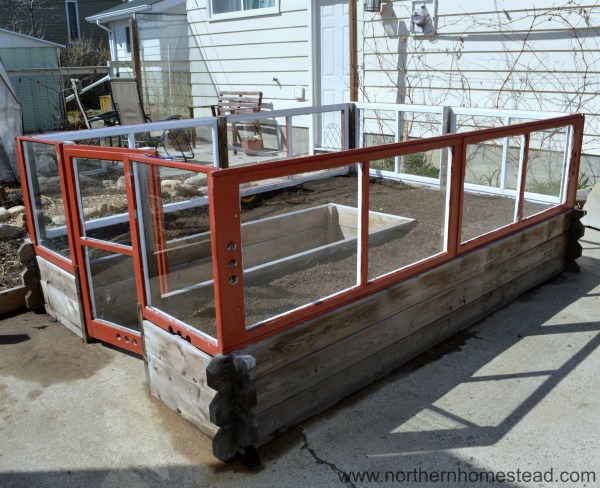
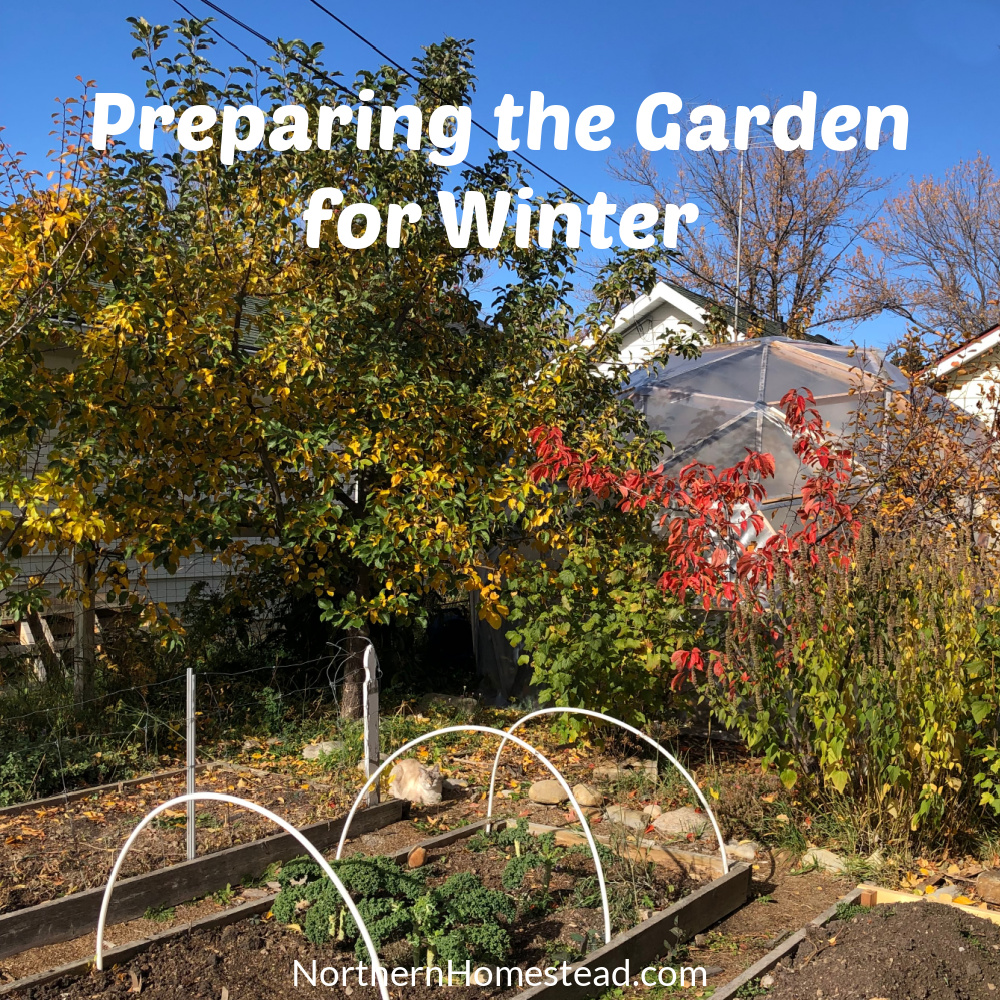
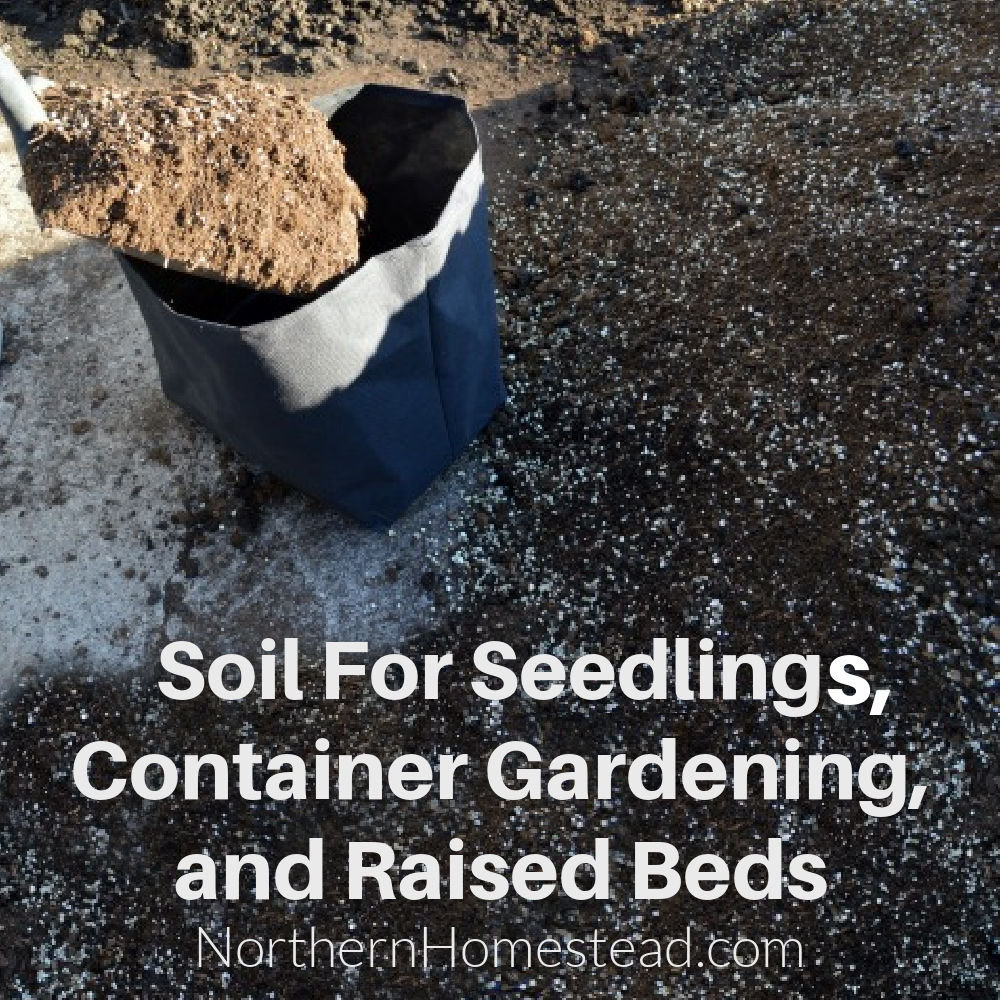
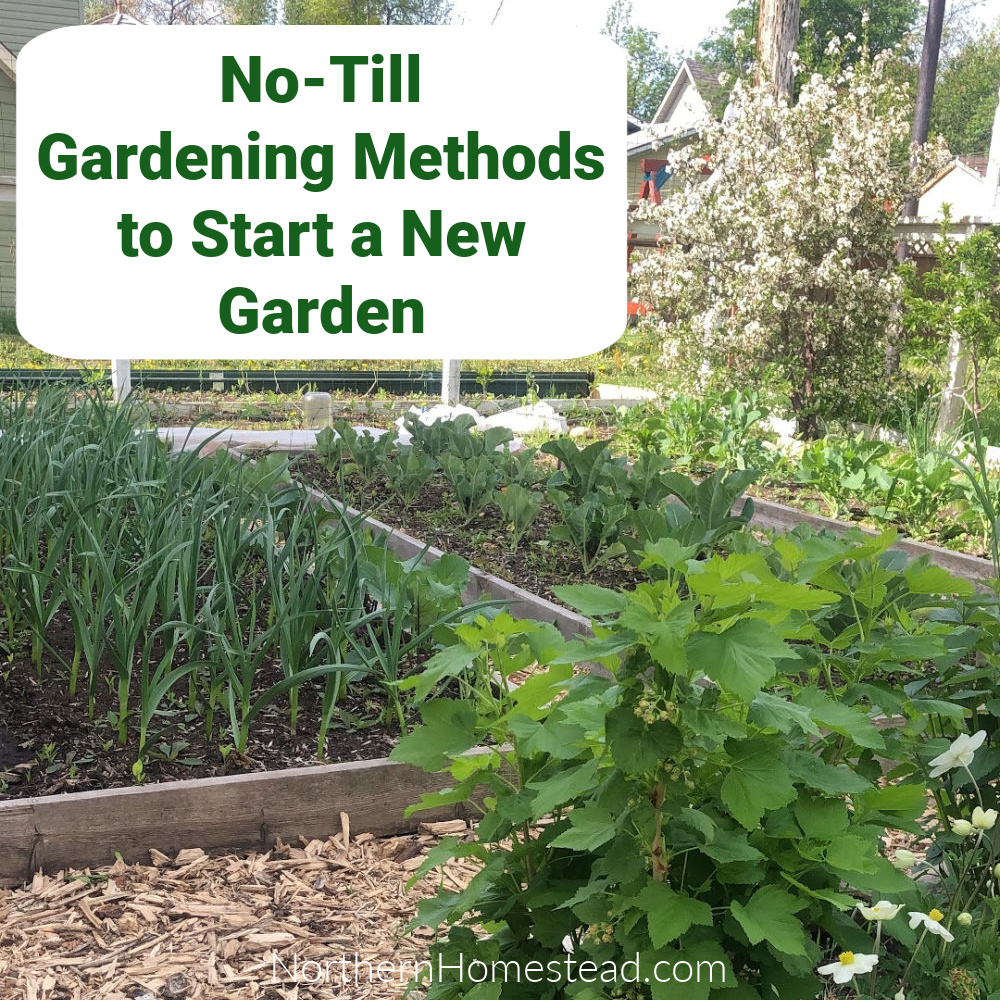
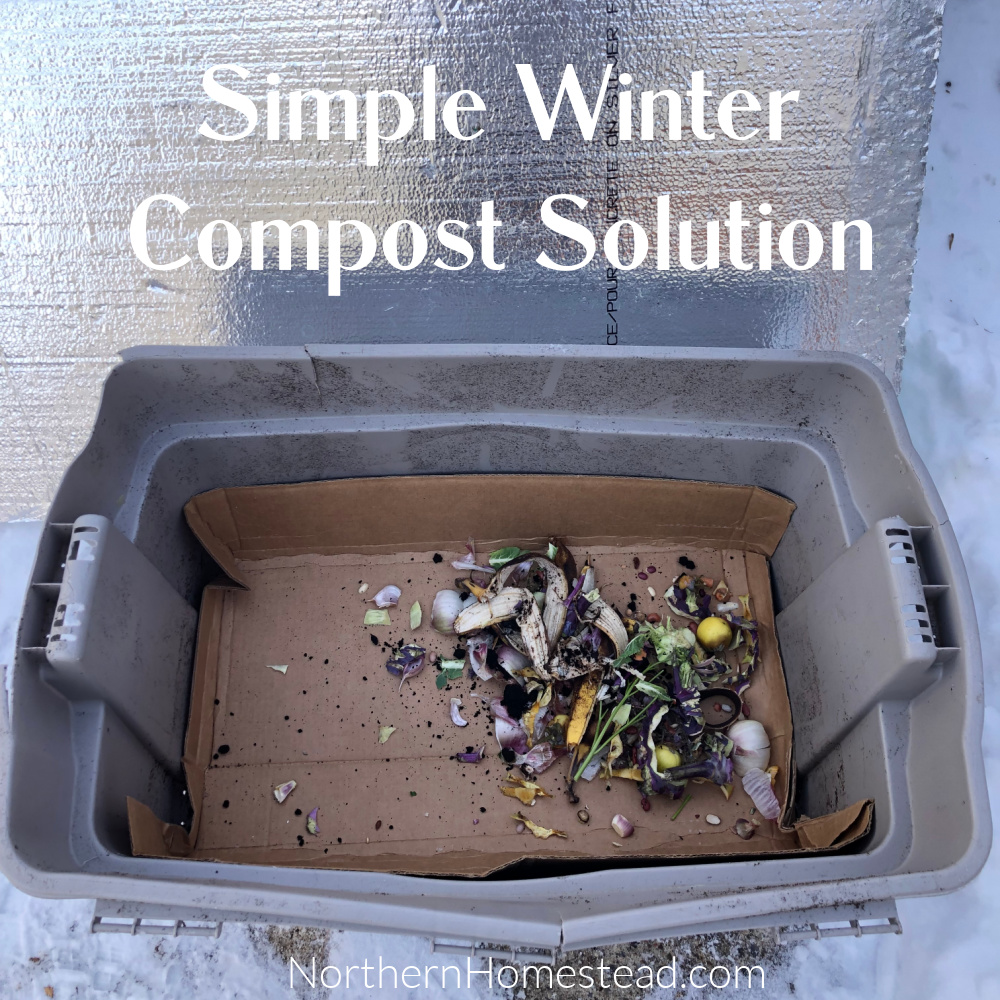
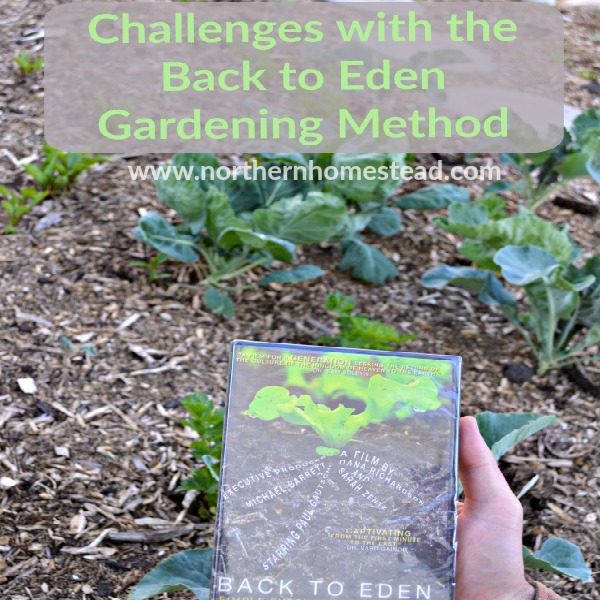
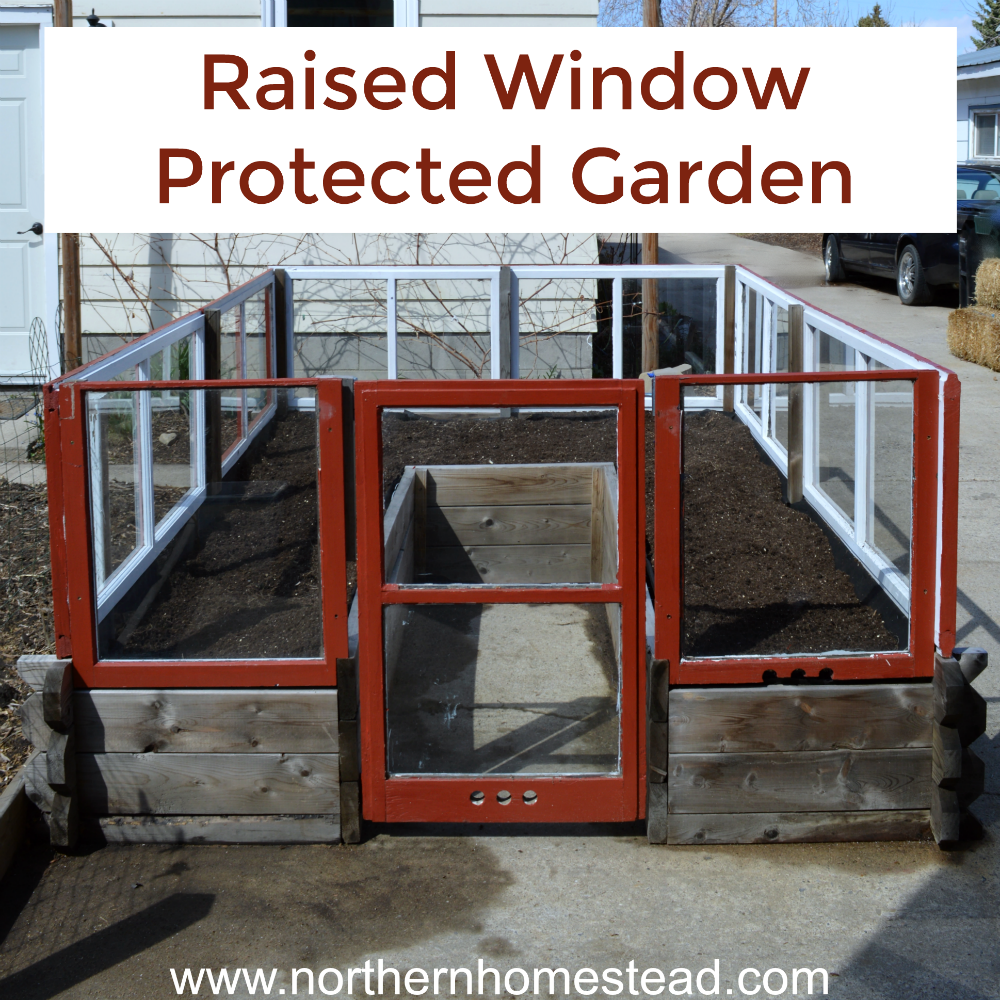
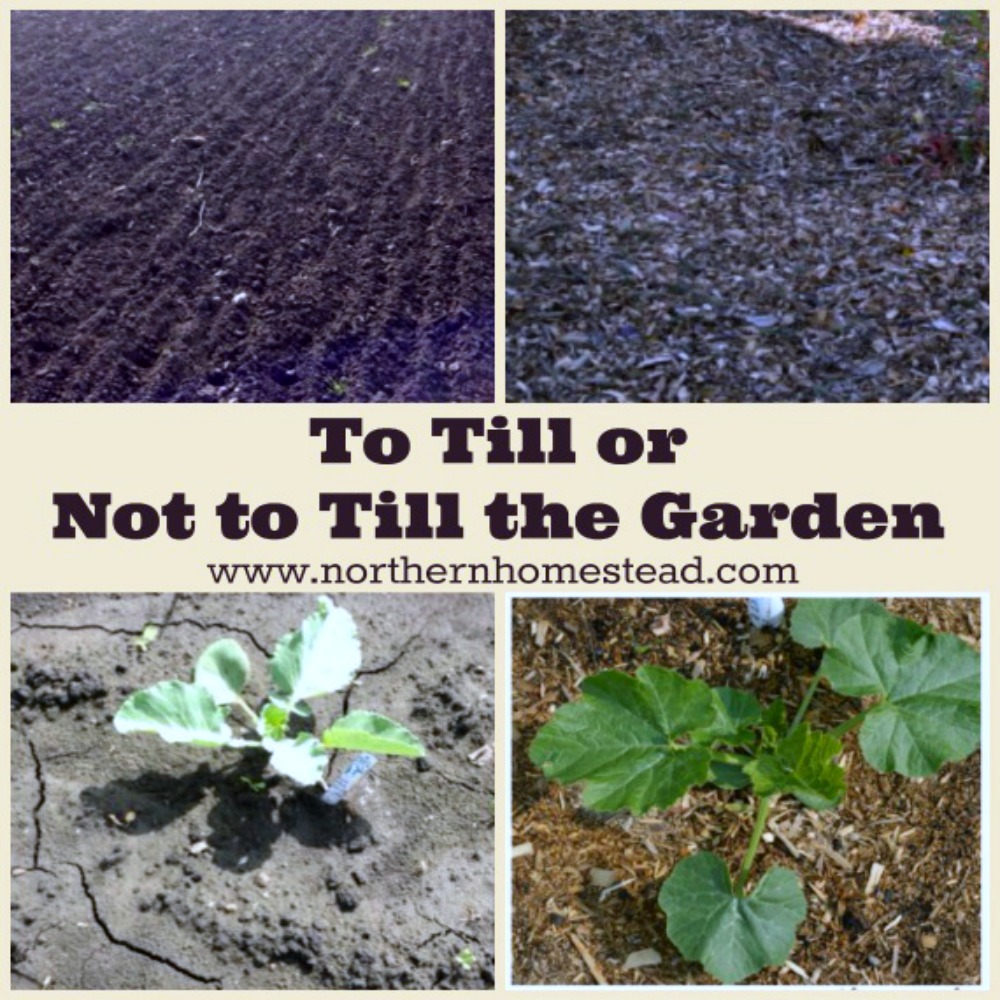
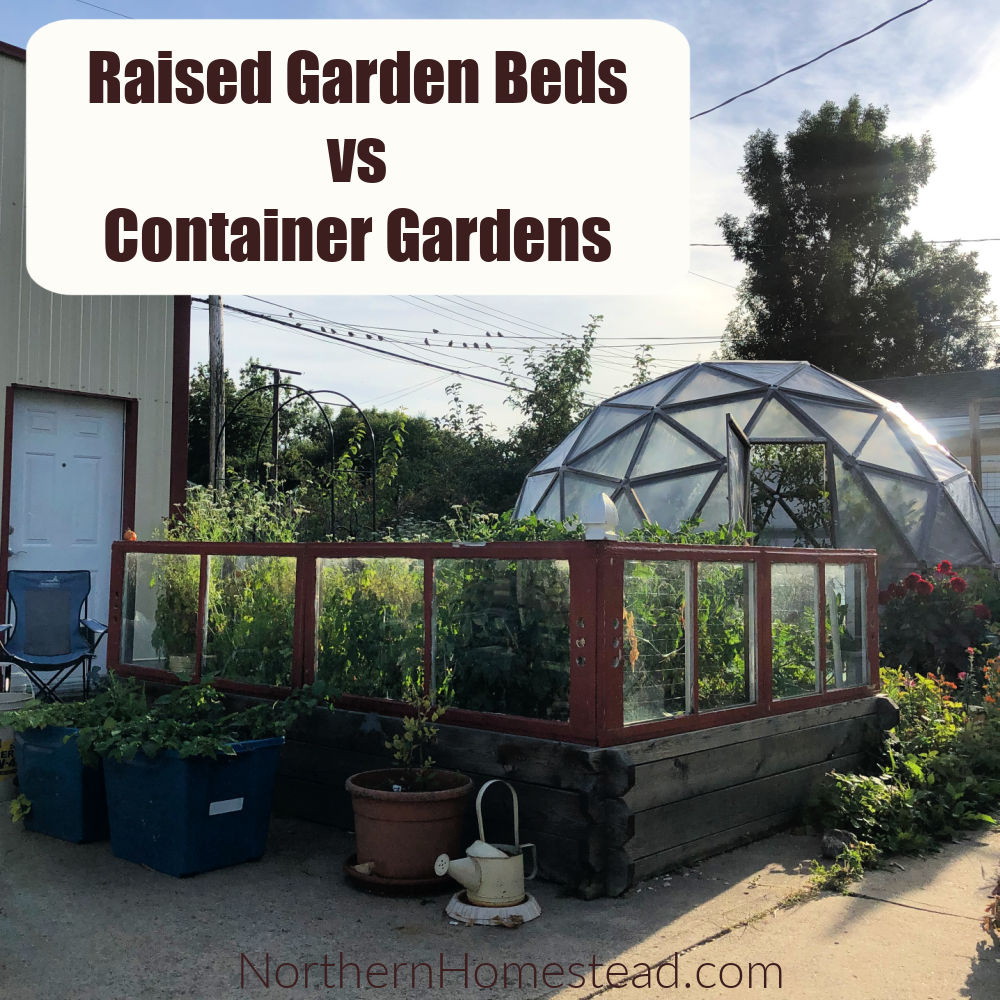
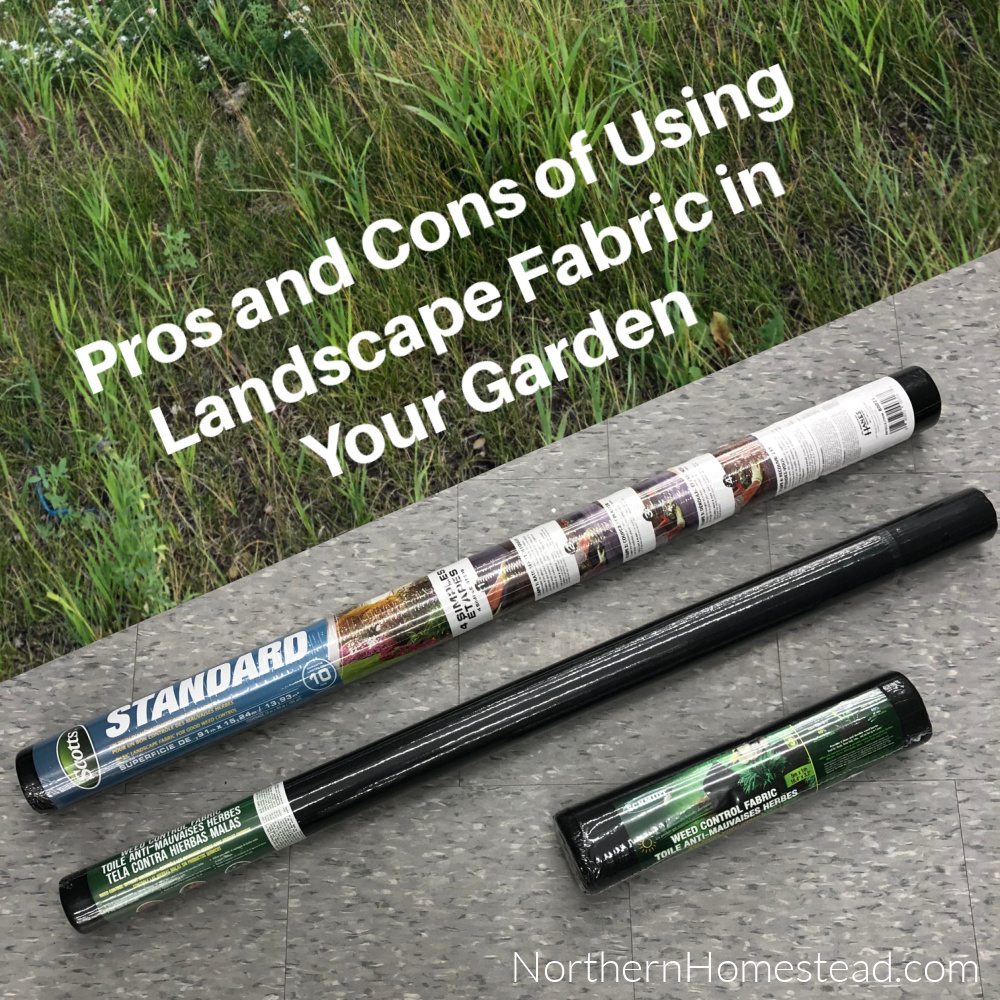
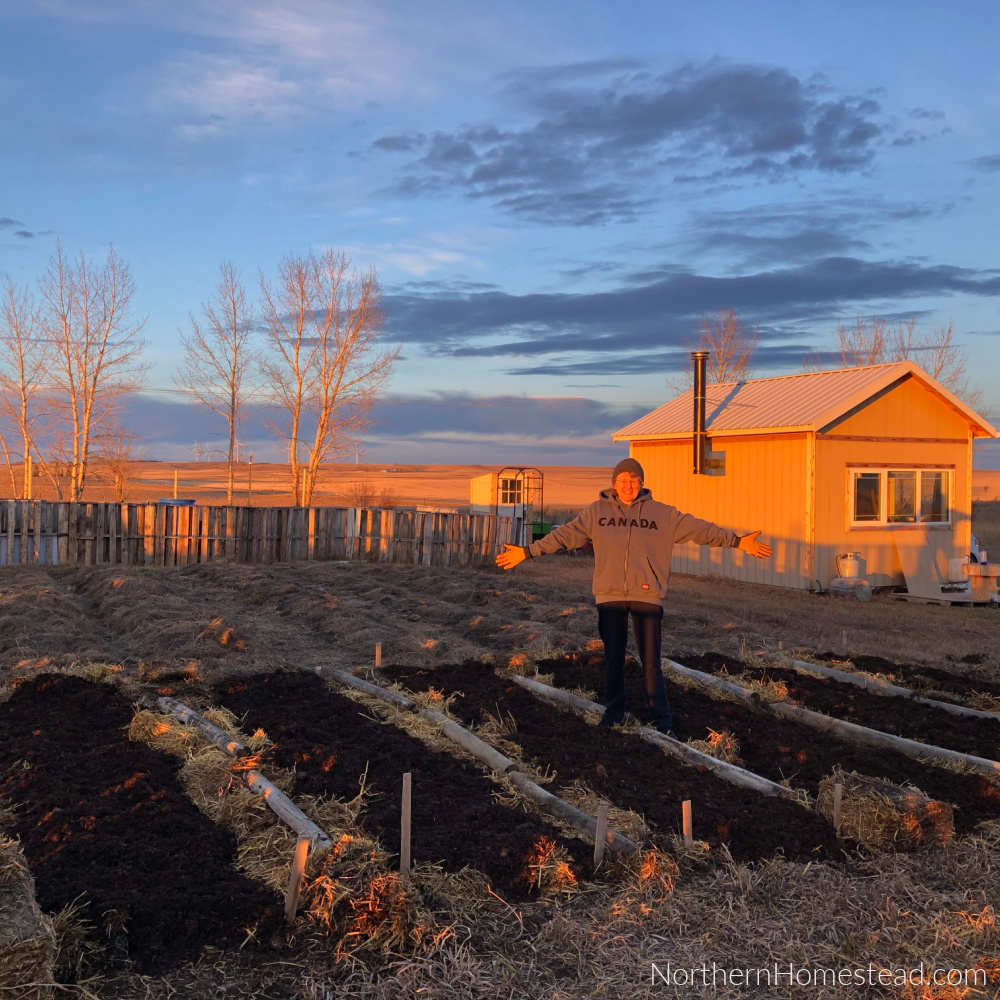

I’ve made the low raised beds you mentioned and they are indeed easy to work with. Mine are 4 ft wide which is what I can easily reach into from both sides. The pathways are mulched with woodchips. I’ve also added some higher raised beds made with slabs of wood left over from milling. These are various widths but up to 12 -14 inches high. They hold more dirt and are nice for larger plants with deep roots Inside my high tunnel I’m growing in large plastic pots. I’m trying potatoes this year and onions. I figure this way I can protect them from frost by adding the plastic cover. Right now the plastic is off and I’m using shade cloth 40% to help keep plants happy. It can get very hot and dry here in summer and I’m hard pressed to keep things watered enough. I’ve also got my rhubarb in pots and have them covered with shade cloth which they seem to do better with. I just lay the cloth over the plants. I’m finding it difficult to make enough compost quickly enough to keep the beds healthy. I don’t want to depend on fertilizer but have not figured out how to get things going without animal manure which is hard to come by and a lot of work to hand shovel in and out of the truck. Any ideas would be appreciated. There seems to be very little in the way of worms, rolly pollys and other bugs to break down the compost. Maybe I need to water it and keep it covered with plastic to prevent drying out. Have you ever experimented with humanure? Thank you for your nice website Anna. Great pictures also!
Thank you for your kind words. To answer your questions, garden beds need to be open to the soil beneath them whenever possible; otherwise, you have a container garden. We have a whole blog article on this topic that you can read here. Maintaining the health of container gardens can be challenging. Worms and beneficial soil organisms have nowhere to hide when it’s too hot and dry or too cold in the winter.
We haven’t experimented with humanure, but I’ve heard it can be used if you’re comfortable with it. We have used urine in compost, as it helps to moisturize and adds nitrogen. It might be a good, easy solution.
Hi Anna,
My thoughts on garden beds and pathways have changed recently due to health issues the last 3 years that led to total neglect in my garden. Now I am getting my energy and brain back after treatment, and am gratefully getting my gardening mojo back. It’s made me think long and hard about aging and setting my garden up for accomodations for those limits. My garden did best in holding off weeds where I had living mulch pathways, as opposed to pavers (weeds grew up in the spaces between) and mulch (which petered out as the gardener wasn’t able to replenish). Each year of neglect led to exponential increases in weeds as they went to seed and spread. I ate as many of the weeds as possible, so they did provide some valuable nutrients. I had friends offer to help in the garden, but I didn’t even feel well enough to organize it or direct them. Even though I’ve had fibromyalgia and chronic fatigue syndrome for 33 years and am 69, I wasn’t in the least realistically prepared for something like this. What I’m doing now: asking for help when I need it, utilizing purchased organic dry fertilizer and worm castings instead of hauling and shoveling manure, increasing my perennial vegetables, eliminating ‘deer candy’ from my ornamental gardens so I don’t have to spray repellent, and lowering my expectations. I’m grateful that I had already created raised beds out of field stone and a fence to keep critters out of the vegetable garden. We also had already made the choice to stop mowing and grow a meadow. Planting densely in the vegetable garden and ornamental gardens is very helpful, no bare ground.
Gardening is just too valuable as a source of nutrients and passion and joy for me to give it up! I’ll just keep adapting.
Thank you, Stephanie, so much for sharing your experience. I’m happy to hear that you can still do some gardening, as you mentioned, it is such a valuable and rewarding hobby. Having a garden design in place to adapt when things don’t go as we prefer is very important. I found your experience with pavers instead of mulched pathways interesting, and I appreciate you sharing it.
My question about permanent garden beds is how do you keep the quack grass out? That stuff is indestructible, and its roots can travel under, over around and through just about anything. No mulch or paving stones are going to stop it.
If you have quack grass, it is a problem no matter what beds you use. However, if the soil in the beds is loose and rich in organic material, the quack grass is relatively easy to pull. Two of my beds are along the back lane, and there is a lot of grass growing in. Cleaning it out in spring with a garden fork helps to make a good start.